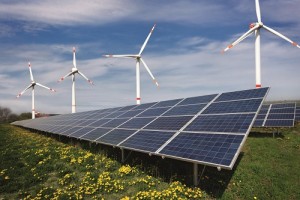Will Renewables Replace Fossil Fuels?
Renewable energy development has taken off in the United States over the past decade. Solar, wind, and other renewable technologies are projected to continue to grow rapidly. But renewables still have a long way to go to replace oil, coal, and natural gas as primary sources of energy. What will it take to reach that threshold and what obstacles and limits do we need to understand as we transition to a truly sustainable energy economy?
We’ll examine these and other key questions regarding the outlook for renewable energy and what it means for America’s future.
Guests:
- Mark Jacobson – professor of civil and environmental engineering, Stanford University; senior fellow, Precourt Institute for Energy; co-author, A Plan to Power 100 Percent of the Planet with Renewables
- David Blittersdorf – president & CEO, AllEarth Renewables; founder, NRG Systems
- Tom Murphy – professor of physics, University of California, San Diego; creator, Do the Math , a blog about assessing energy options
Key Questions:
Cost: What are the important factors driving the total cost of different renewable technologies—e.g. equipment vs. soft costs? How far will costs continue to decline? Will costs be affordable enough to deploy at very large scale?
Density/Scale: Renewables are generally diffuse and distributed energy sources, how does that aid or hinder their prospects to become a primary source of energy?
Energy Quality/Substitutability: Renewable energy is most commonly used to make electricity, how does that affect its substitutability for uses that are currently non-electric—i.e. thermal heating and transportation?
Storage: How important is storage to the future of renewable energy? Are the oft-cited issues about storage overstated?
Takeaways:
Bullets below summarize remarks by featured guests; they are not definitive statements by The Energy Xchange. In the spirit of discourse, this information may be revised through continued discussion.
…click on the above link to read the rest of the article…
